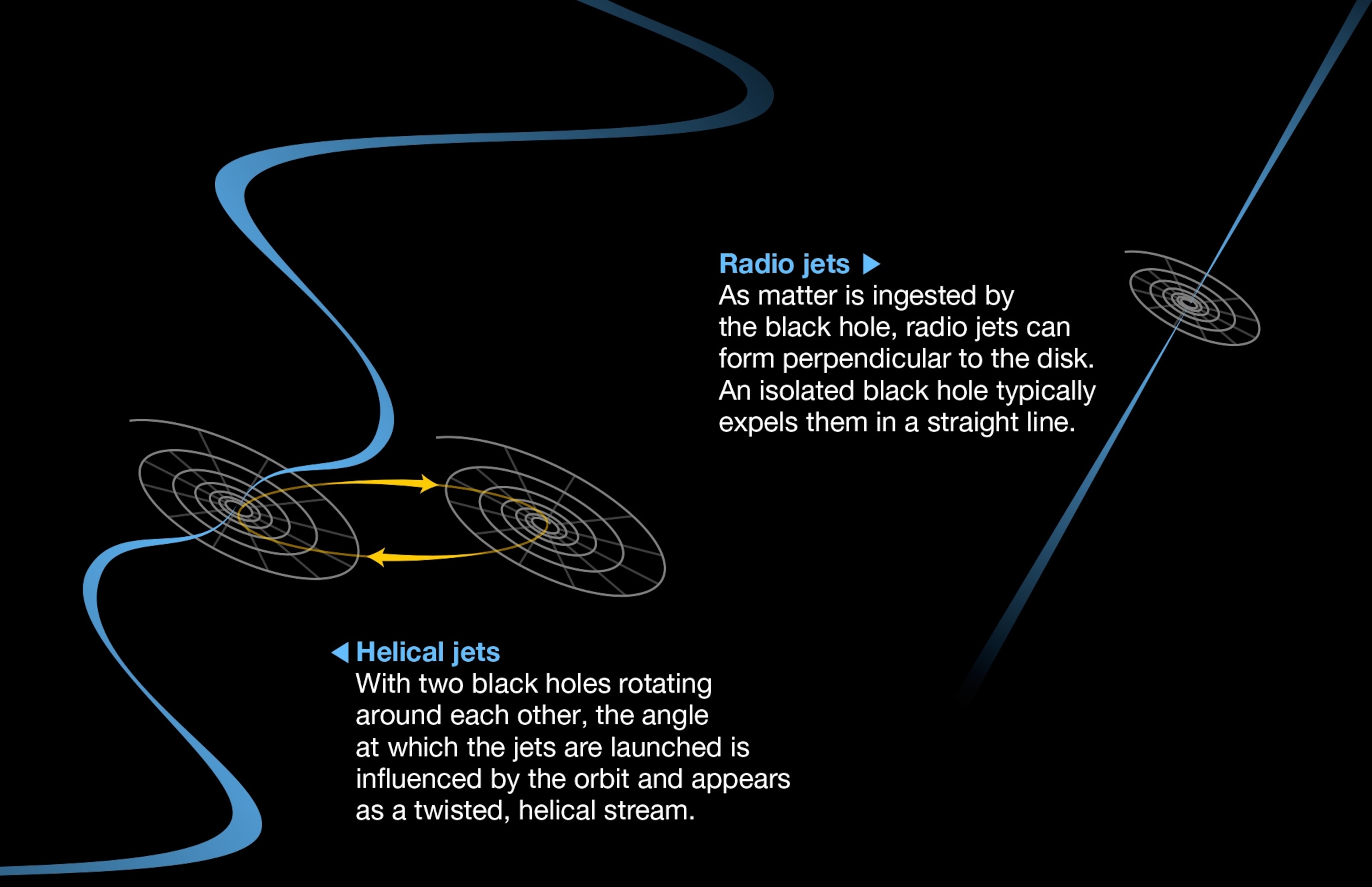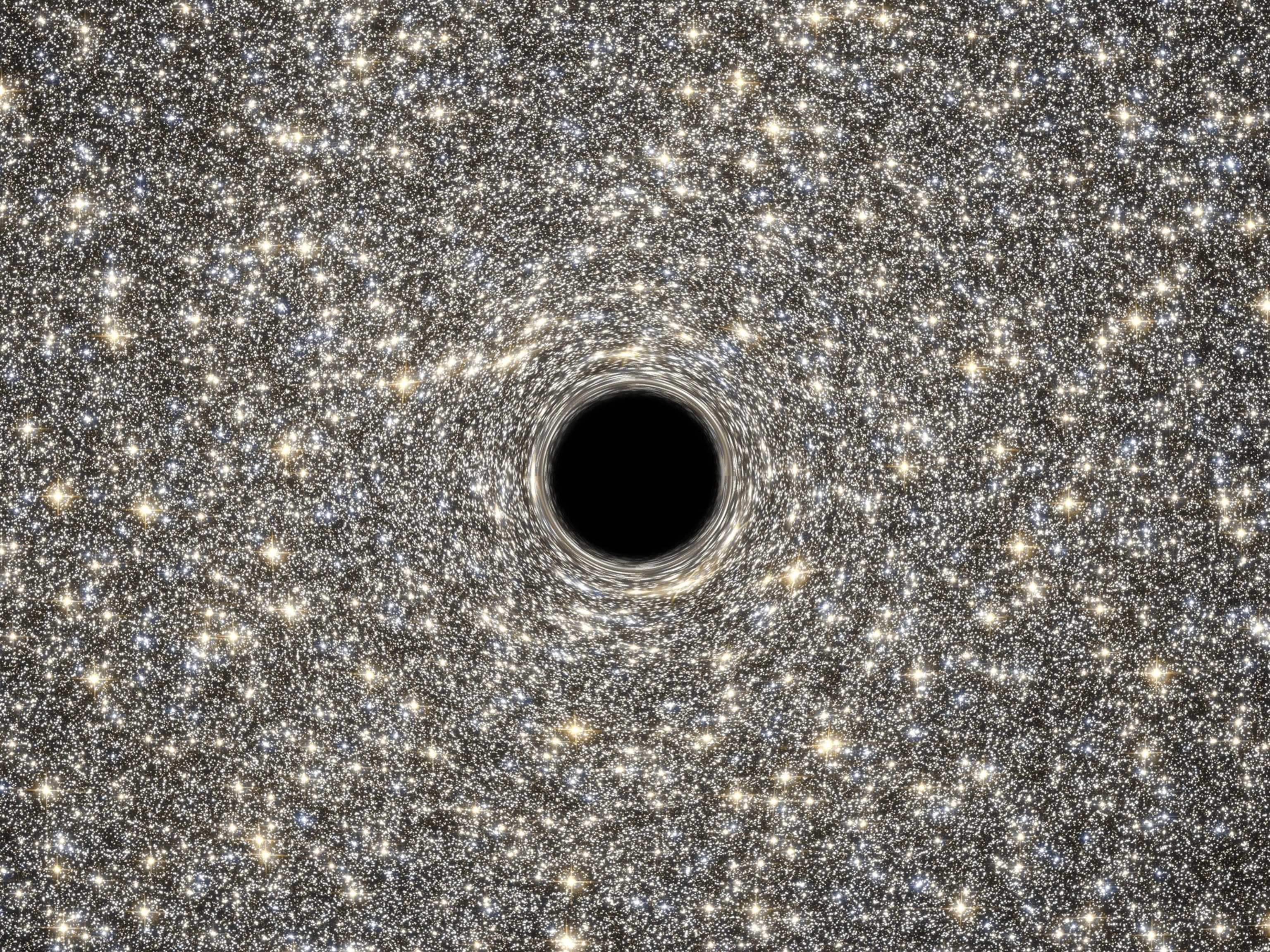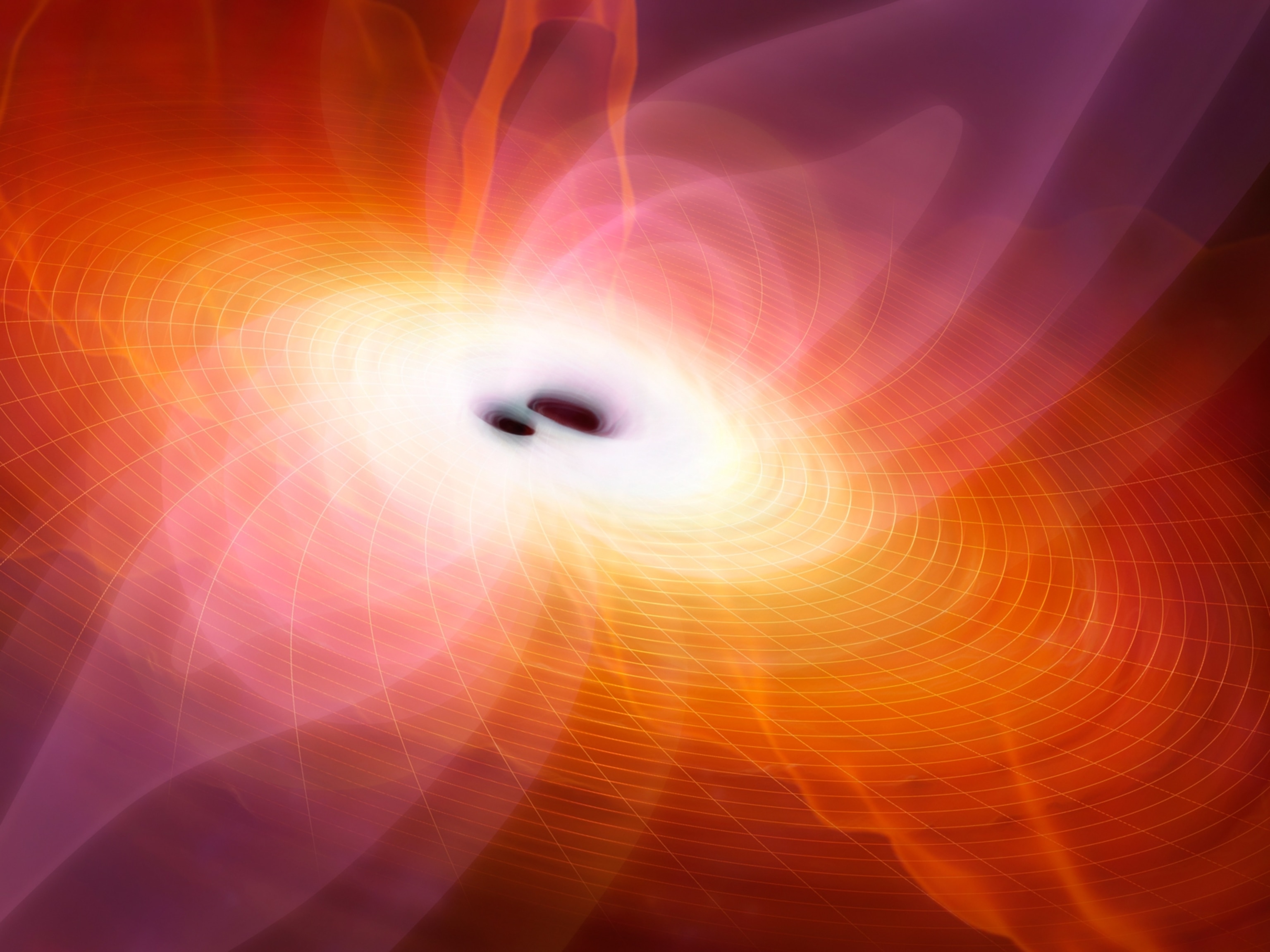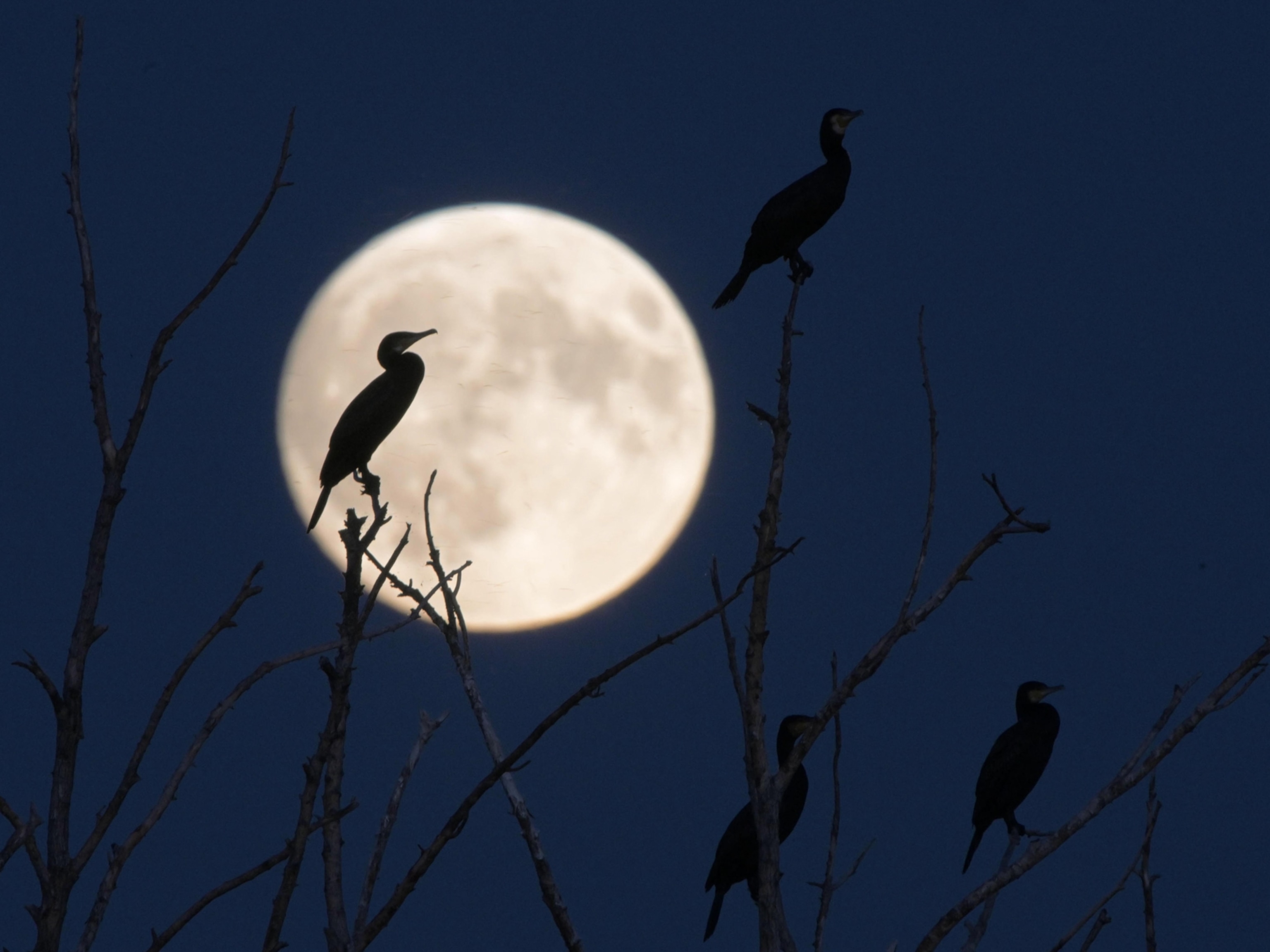
Triple Monster Black Hole Discovered
Sometimes big, bad things comes in threes, including jumbo black holes.
The discovery of a trio of jumbo black holes circling the center of a distant galaxy, reported by astronomers on Wednesday, suggests that pairs or triplets of such monsters may be surprisingly common.
Astronomers have learned over the past decade or two that virtually every full-size galaxy such as our own Milky Way has a giant black hole lurking in its core. These monsters weigh in with a mass equal to millions or even billions of stars. (Related: "Black Hole: Star Eater.")
The new observations, however, described in the journal Nature, suggest that many galaxies have not one, but two or more giant black holes in their centers, orbiting each other in a tight gravitational dance that will ultimately lead the objects to merge together into something even more gigantic.
Watching these mergers will offer insight into how gravity behaves when stretched to its limits, astronomers predict, with clues revealed by monster black hole mash-ups such as the just-discovered triplet. (See: "Photo Gallery: Black Holes.")
"We were quite surprised to find it," says Roger Deane, of the University of Cape Town in South Africa, lead author of the report.
Supermassive Neighbors
In one sense, Deane and his colleagues shouldn't have been surprised. It's widely accepted that when galaxies come close together, their gravity can force them to form a single agglomeration of stars. In fact, the Milky Way and the (relatively) nearby Andromeda galaxy will probably experience such a merger in about four billion years. Since each galaxy hosts a single massive black hole, the resulting single galaxy should end up with two.
In practice, however, astronomers haven't found many double black holes. One popular explanation has been that the black holes fuse together very quickly, leaving few doubles for astronomers to find. Another explanation, says Princeton astrophysicist Jenny Greene, who wasn't involved with this research, is that they orbit each other so closely that they're hard to pick out.
"In principle," she says, "there could be a huge population of binary black holes separated by just a few light-years."
Invisible Whirlpools
Deane and his group originally became interested in this particular galaxy, known by the unwieldy name SDSS J150243.091111557.3, because it had been flagged by the Sloan Digital Sky Survey (thus the "SDSS" in the name) as having what looked like two sources of bright light in its core.
That indicated the possibility of two black holes there, with the light coming not from the invisible objects themselves but from the whirlpools of gas heated to incandescence as they spiral in under the black holes' intense gravity. Jets emitted by the black holes pinpointed their location.

To try to understand what they were looking at, the astronomers observed the galaxy with the Very Long Baseline Array, or VLBA, which combines images from a score of radio telescopes located in South Africa, Europe, the U.S., Russia, and China. The telescopes' wide geographical separation allowed the scientists to view the galaxy and its patch of sky with extremely high resolution.
Sure enough, they found two black holes, separated by several thousand light-years.
But they also discovered that one of them was actually two jumbo black holes, orbiting so tightly that they had appeared to be a single object. The tight pair, Greene says, "is so sexy is because we really don't know whether black holes ultimately merge."
Chains of Gravity
Theory suggests that they might not, or at least not for many billions of years. The two tightly bound black holes are only 460 light-years apart, orbiting each other once every 150,000 years.
In order to spiral into each other, black holes have to jettison some of their orbital energy. One way to do that is by flinging away nearby stars or gas.
After a certain point, however, there aren't any more stars in their neighborhood to fling: The only way they can get rid of energy is by radiating it away in the form of gravitational waves, a phenomenon predicted by Einstein but never directly observed.
Those waves would become more violent as the black holes came very close to each other, making them detectable in principle by a space-based gravitational-wave detector known as the Laser Interferometer Space Antenna, or LISA, which has been proposed but not yet funded.
"If we can get an idea of what fraction of galaxies have [tightly orbiting black holes]," says Greene, "we can start to constrain how likely it is that LISA will detect gravitational waves."
The good news is that Deane and his colleagues found their one tight pair after looking at just six galaxies. While the pair isn't orbiting closely enough to be picked up by LISA, its discovery suggests that there could be plenty of much tighter pairs out there as well, he says. "Either these are a lot more common than previously thought—or we just happened to be incredibly lucky."
Follow Michael Lemonick on Twitter.






